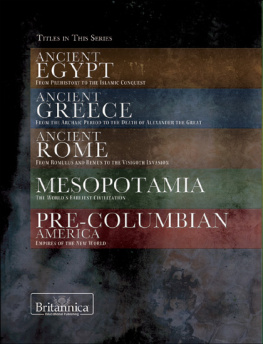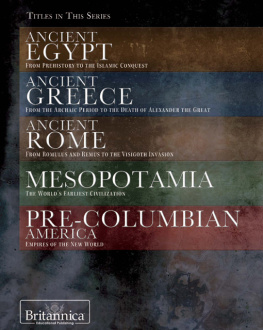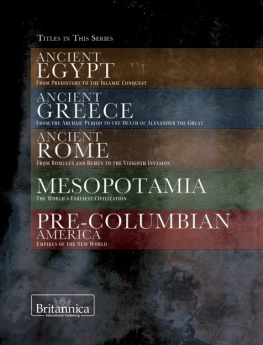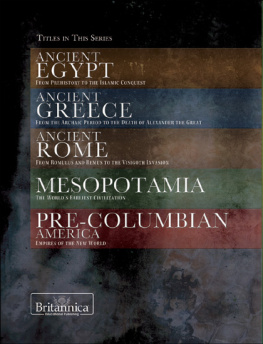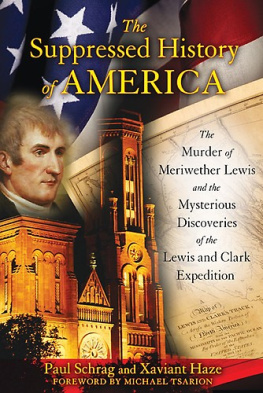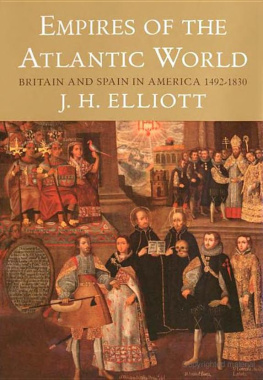PRE-COLUMBIAN AMERICA
EMPIRES OF THE NEW WORLD
THE BRITANNICA GUIDE TO ANCIENT CIVILIZATIONS
PRE-COLUMBIAN AMERICA
EMPIRES OF THE NEW WORLD
EDITED BY KATHLEEN KUIPER, MANAGER, ARTS AND CULTURE

Published in 2011 by Britannica Educational Publishing
(a trademark of Encyclopdia Britannica, Inc.)
in association with Rosen Educational Services, LLC
29 East 21st Street, New York, NY 10010.
Copyright 2011 Encyclopdia Britannica, Inc. Britannica, Encyclopdia Britannica,
and the Thistle logo are registered trademarks of Encyclopdia Britannica, Inc. All rights reserved.
Rosen Educational Services materials copyright 2011 Rosen Educational Services, LLC.
All rights reserved.
Distributed exclusively by Rosen Educational Services.
For a listing of additional Britannica Educational Publishing titles, call toll free (800) 237-9932.
First Edition
Britannica Educational Publishing
Michael I. Levy: Executive Editor
J.E. Luebering: Senior Manager
Marilyn L. Barton: Senior Coordinator, Production Control
Steven Bosco: Director, Editorial Technologies
Lisa S. Braucher: Senior Producer and Data Editor
Yvette Charboneau: Senior Copy Editor
Kathy Nakamura: Manager, Media Acquisition
Kathleen Kuiper: Manager, Arts and Culture
Rosen Educational Services
Jeanne Nagle: Senior Editor
Nelson S: Art Director
Cindy Reiman: Photography Manager
Matthew Cauli: Designer, Cover Design
Introduction by Janey Levy
Library of Congress Cataloging-in-Publication Data
Kuiper, Kathleen.
Pre-Columbian America : empires of the New World / Kathleen Kuiper.
p. cm. -- (The Britannica guide to ancient civilizations)
In association with Britannica Educational Publishing, Rosen Educational Services.
Includes bibliographical references and index.
ISBN 978-1-61530-211-6 (eBook)
1. AmericaCivilization. 2. IndiansHistory. 3. IndiansSocial life and customs. I. Title.
E58.K85 2010
970dc22
2010013770
On the cover: Templo las Inscripciones (Temple of the Inscriptions), a famous Mayan burial monument in Palenque, Mexico. Peter Adams/Photographers Choice/Getty Images
On pages : A woven mat from the pre-Columbian archeological site Chavn de Huntar, in Perus Andean highlands. Herman du Plessis/Gallo Images/Getty Images
CONTENTS

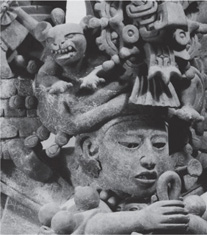
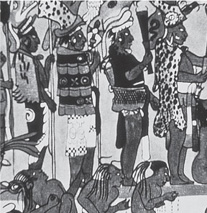


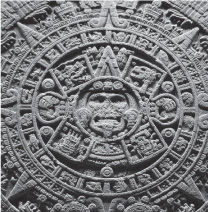


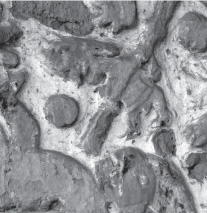
INTRODUCTION

Symbols and characters from an Aztec syllabary, which provides a key to the Aztec written language. Hulton Archive/Getty Images
B ecause educational curricula in the West typically emphasize European civilization and cultural traditions, pre-Columbian civilizations are, at best, a peripheral concept for many people today. Perhaps the best-known features of pre-Columbian civilizations are architectural, namely the Mayan and Aztec pyramids and the Inca ruins at Machu Picchu, and ritualistic, such as a penchant for human sacrifice. Yet these isolated elements provide only a fragmented, and thus distorted, picture of the cultures to which they belonged. These elements alone cannot convey the size, richness, and complex history of pre-Columbian civilizations.
Details found in this book mark an attempt to rectify that situation. Readers will come to a deep understanding of the cultures, traditions, accomplishments, and belief systems of the Mesoamerican and Andean peoples.
The term pre-Columbian refers to a time in the Americas before European explorers and settlers arrived. It derives from one of Western historys most familiar explorers, Christopher Columbus, and owes its invention to Columbuss traditional albeit somewhat inaccurate designation as the discoverer of this New World. While pre-Columbian can apply to life in both North and South America, when scholars speak of pre-Columbian civilizations, they are referring to the great civilizations of Mexico, Central America, and the Andes. The Maya, Aztec, and Inca are the best known of these. Maya and Aztec civilizations flourished in the area known as Mesoamerica, which includes about half of Mexico, all of Guatemala and Belize, and parts of Honduras and El Salvador. The Inca realm in the South American Andes covered parts of the modern nations of Ecuador, Peru, Bolivia, Chile, and Argentina.
Scholars once believed that the Americas were sparsely populated at the time of European arrivala vast wilderness paradise ripe for the taking, abundant with animals, natural resources, and perhaps gold beyond ones wildest imaginings. While the continents natural riches have never been questioned, the notion of an almost-uninhabited land is no longer viewed as accurate. Some scholars have estimated that the population of the Americas could have been as high as 112 million when Columbus arrived. In contrast, Europes population at the time has been estimated at 70 million to 88 million. It has also been estimated that more than 25 million of the Americas inhabitants lived in central Mexico. That figure is more than two and a half times the combined population of Spain and Portugal in Columbuss day.
Supporting the thesis of burgeoning populations are archeological finds such as the tools, approximately 13,000 years old, found near Clovis, New Mexico, in the 1930s. Archaeologists unearthed a site at Monte Verde, Chile, that was occupied at least 12,800 years ago. These provided clear evidence of humans in the Americas, and for much of the 20th century, it was believed that these people represented the continents earliest inhabitants. According to the most popular theory, they had reached the Americas by crossing the Bering Strait on a land bridge, created by lower sea levels during the Ice Age, that connected what is now Siberia and Alaska. From Alaska, these people, called paleo-Indians, and their descendants spread across both North and South America.
Later in the century, new discoveries challenged earlier thinking. In Mexico, archaeologists found evidence of even earlier human habitation. At Tlapacoya, near Mexico City, they found tools dated at about 23,000 years old. Tools almost 24,000 years old were uncovered near Puebla, Mexico. What the Mexican discoveries meant was that people were living and thriving in the Americas at a time when northern Europe was still covered by ice sheets.
Next page
